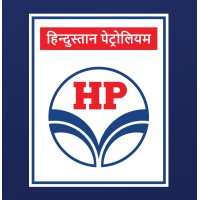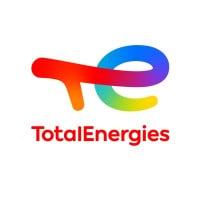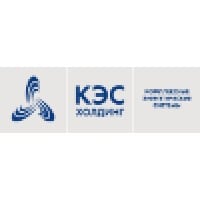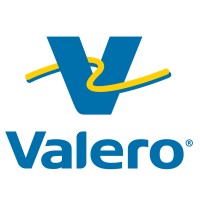Company Cyber Security Posture
NANA
NA Company Details
NA
NA
NA
NA
NA
NA
Scan still pending
NA
NA
Between 200 and 800
This score is AI-generated and less favored by cyber insurers, who prefer the TPRM score.
 NA Global Score
NA Global Score.png)

Company Scoring based on AI Models
| Model Name | Date | Description | Current Score Difference | Score |
|---|---|---|---|---|
| AVERAGE-Industry | 03-12-2025 | This score represents the average cybersecurity rating of companies already scanned within the same industry. It provides a benchmark to compare an individual company's security posture against its industry peers. | N/A | Between 200 and 800 |
Company Cyber Security News & History
| Entity | Type | Severity | Impact | Seen | Url ID | Details | View |
|---|
Company Subsidiaries

NA
Access Data Using Our API

Get company history
.png)
NA Cyber Security News
PwC hired a top NSA executive to help lead a new consulting division focused on cyber threats
PwC has a new hire: the former executive director of national cybersecurity. Morgan Adamski joined the Big Four firm on Monday as a partner ...
Introducing the smarter, more sophisticated Malwarebytes Trusted Advisor, your cybersecurity personal assistant
Malwarebytes Trusted Advisor has had an update, and it's now sharper, smarter, and more helpful than ever.
Trump AI plan calls for cybersecurity assessments, threat info-sharing
The U.S. government will expand information sharing, cyber risk evaluations and guidance to the private sector to address the cybersecurity ...
Contract lapse leaves critical infrastructure cybersecurity sensor data unanalyzed at national lab
Data from sensors that detect threats in critical infrastructure networks is sitting unanalyzed after a government contract expired this weekend ...
Wake Tech program molds cybersecurity experts of the future, helps inform business owners
Wake Tech is shaping the future of cybersecurity with its innovative Sentinel program, empowering students to become industry experts while ...
Jim Cramer says buy these 2 cybersecurity stocks in the wake of Microsoft's attack
CNBC's Jim Cramer has long believed that cyber stocks are an essential part of investors' portfolios.
Analyst Bullish on Crowdstrike Holdings (CRWD) Says Cybersecurity Could Be ‘Biggest Subsector’ For Tech
Crowdstrike Holdings Inc (NASDAQ:CRWD) shares are up 36% so far this year. Artisan Developing World Fund stated the following regarding ...
Agentic AI Turns Enterprise Cybersecurity Into Machine vs. Machine Battle
The first AI-driven preemptive cyber-defense has taken place. Now, corporate leaders may need to confront questions about agentic AI.
Cybersecurity jobs available right now: July 22, 2025
Here are the worldwide cybersecurity job openings available as of July 22, 2025, including on-site, hybrid, and remote roles.

NA Similar Companies

Hindustan Petroleum Corporation Limited
Hindustan Petroleum Corporation Limited (HPCL) is a Maharatna Central Public Sector Enterprise (CPSE) and a S&P Global Platts Top 250 Global Energy Company. HPCL has a strong presence in downstream hydrocarbon sector of the country with a sizable share in petroleum product marketing and also has bus

TotalEnergies
Have you ever thought of offering your skills and expertise to a multinational company? Give your best to better energy and make the commitment with TotalEnergies. With over 500-plus professions in 130 countries, we offer high safety and environmental standards, strong ethical values, an innovatio

Suncor
In 1967, we pioneered commercial development of Canada's oil sands – one of the largest petroleum resource basins in the world. Since then, Suncor has grown to become a globally competitive integrated energy company with a balanced portfolio of high-quality assets, a strong balance sheet and signifi

Integrated Energy Systems
руппа «Т Плюс» — крупнейшая российская частная компания, работающая в сфере электроэнергетики и теплоснабжения Show more Show less

Valero
Valero is an international manufacturer and marketer of transportation fuels and petrochemical products. We are a Fortune 500 company based in San Antonio, Texas, fueled by nearly 10,000 employees and 15 petroleum refineries with a combined throughput capacity of approximately 3.2 million barrels pe

Ecopetrol
Ecopetrol (NYSE: EC) es la compañía más grande en Colombia y uno de los principales grupos de energía de Latinoamérica. Cuenta con más de 18.000 empleados y es responsable del 60% de la producción de hidrocarburos en Colombia. Es propietaria de las dos refinerías del Colombia y de la gran pa

Frequently Asked Questions
Explore insights on cybersecurity incidents, risk posture, and Rankiteo's assessments.
NA CyberSecurity History Information
How many cyber incidents has NA faced?
Total Incidents: According to Rankiteo, NA has faced 0 incidents in the past.
What types of cybersecurity incidents have occurred at NA?
Incident Types: The types of cybersecurity incidents that have occurred include .
Additional Questions
What Do We Measure?
















Every week, Rankiteo analyzes billions of signals to give organizations a sharper, faster view of emerging risks. With deeper, more actionable intelligence at their fingertips, security teams can outpace threat actors, respond instantly to Zero-Day attacks, and dramatically shrink their risk exposure window.
These are some of the factors we use to calculate the overall score:
Identify exposed access points, detect misconfigured SSL certificates, and uncover vulnerabilities across the network infrastructure.
Gain visibility into the software components used within an organization to detect vulnerabilities, manage risk, and ensure supply chain security.
Monitor and manage all IT assets and their configurations to ensure accurate, real-time visibility across the company's technology environment.
Leverage real-time insights on active threats, malware campaigns, and emerging vulnerabilities to proactively defend against evolving cyberattacks.




